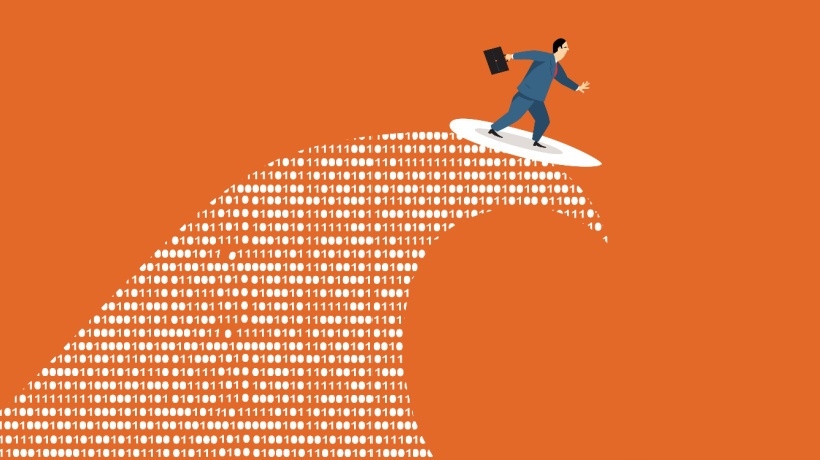Real-Time Testing: Driving Employee Performance Through Data Analytics
We're asked these questions because business leaders are asking them to do the same. For your leaders, it comes down to one thing…to see results for the money they give you for "training".
While these questions may seem daunting, the responses are relatively straightforward...only if you’re willing to put in the effort and resources. And that’s the key and where most Learning practitioners fail and fail miserably.
Here’s some quick advice; stop taking shortcuts! Every one of your learning efforts requires attention, care, and diligence. Also, and most relevant, is accountability. Never forget that your learning initiative must lead to some tangible results if you want business leaders to take you seriously.
So, let's get back to the questions asked at the outset of this article, basically, "How do we do this?". While some of you may believe that this happens by chance, you’re wrong. It is a systematic process leveraging internal expertise and processes. The answer essentially involves 3 elements all at your disposal, and they are the learning: 1) purpose; 2) methodology; 3) process, and 4) technology. Let’s look at each one in more depth.
1. Learning Purpose
Our effort was to work with a team within a prominent Global 50 technology company. The first step was to clearly define the organization’s objectives in relation to the company’s customer support process.
The mandate from senior leaders? Become #1 in customer service. This meant the customer support group must fully address and conclude all customer issues and interactions to their satisfaction.
Our team consciously broke free from conventional learning wisdom. The company’s learning group dissected the evaluation process and then reassembled it to fit their specific business requirements. They also did not do this in the isolation of the learning department or myopia of any learning initiative. It was a holistic business approach.
2. Learning Methodology
There are times when convention applies, but there are even more times when you just have to change things up. For learning, it's time to change things up, and that's exactly what we did for this learning effort.
The team and we decided to throw out the baby with the bath water. The revised approach to our learning methodology approach was to:
- Identify specific performance objectives, or metrics, applying to customer service expectations
- Align the performance expectations with appropriate learning outcomes
- Design a targeted skills and job needs assessment process to address critical employee performance skills
- Develop learning strategies and approaches to meet customer service objectives
3. Learning Process
Typically, learning practitioners go through the motions of identifying specific needs, designing around those needs, deploying the solution, and finally, hope employees and leaders are happy with the outcomes. This approach tends to focus on the learning aspects rather than on business results.
Many practitioners recognize this learning evaluation model as the Kirkpatrick 4 levels of evaluation. The problem is that little emphasis is placed on the application of skills on the job and how this impacts performance expectations. This is a passive approach and often the reason why learning practitioners lack credibility.
In our approach, the team knew exactly:
- The business outcome; to be #1 in customer service
- To identify and address specific job skills for the customer support group
- To develop and deploy appropriate learning interventions
In this approach, the learning effort itself took place last. The team conducted the assessment, or the testing, of knowledge and skills first to identify the gaps prior to learning design. This is counterintuitive to a conventional learning approach.
4. Learning Technology
Learning practitioners now have access to some really interesting technologies. These technologies are now inexpensive, easily accessible, and easily usable. So, there's no excuse for practitioners not to make their efforts more relevant and have business impact.
Too often, however, practitioners focus on the technology rather than on the learning solution itself. As a result, they develop a solution to fit the technology when it should be the other way around.
In this instance, the team revisited the process and methodology to ensure they selected the appropriate tool, or technology, to ensure to facilitate the identification of:
- Specific job skills applicable to the customer support group
- Specific performance objectives applying to customer service expectations
A decision was made to design a skills testing process and then to implement a testing technology. Essentially, this became a real-time testing process drive data analytics to a reporting process for each employee.
While this may sound unimpressive, the team was driving 100,000 to 125,000 tests (in a variety of formats) per month, using a growing library of thousands of questions to over 8000 employees worldwide. They analyzed the reported data daily and weekly to determine precise employee skill gaps. The process is illustrated in this flowchart:

This targeted approach allowed the learning team to work with affected business areas and employees to immediately address and resolve the specific skills weakness. And this wasn't about sending employees back to conventional training events. They first assessed the skills gap. Then, they evaluated the most effective approach to resolve it by ensuring it was:
- Timely
Τhe employee could access the learning when needed. - Relevant
Τhe learning precisely addressed the learning need. - Adaptive
Ιt was accessible through a variety of tools employees used. - Integrative
Τhe learning requirement became a central component to address the skill gap. - Effective
Τhe team revisited the employee to ensure the learning met their needs. - Resourceful
Τhe learning solution leveraged existing and available resources. - Seamless
Τhe employees would not see intrusion into their workflow.
This process to apply learning quickly became referred to as T.R.A.In.E.R.S, using the first letters of each step.
One article can only describe the process so far. As you can imagine, the process was much more involved. But at its core, it was about having learning deliver immediate performance improvement leading to the defined business objective, which was to become #1 in worldwide customer service. As a result, this company achieved this objective, and the L&D department continues to be the proactive operational partner the company expects.
Last But Not Least
If you enjoyed this article and want to learn more about how you can do the same for your company, please contact us, we'd enjoy hearing from you.
Also, please visit our recent LinkedIn Learning (Lynda.com) eLearning courses "Gaining Internal Buy-in For eLearning" and "Train-the-Trainer" course designed for both recent and seasoned trainers. Watch for our upcoming Spring/Summer 2018 LinkedIn Learning (Lynda.com) course, "Increasing Elearning Engagement" and "Fundamentals of Corporate Learning".
As a bonus, here's a Free 30-day LinkedIn Learning trial. Enjoy it!
When it comes to what leaders expect, don’t always believe what you hear. Recognize how leaders perceive the role of training within the organization and what they expect. They know training is essential, but it’s up to you to prove them right. This is your time to shine. #alwaysbelearning









